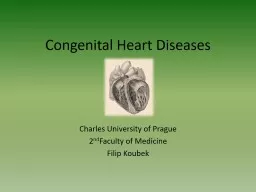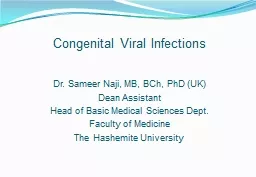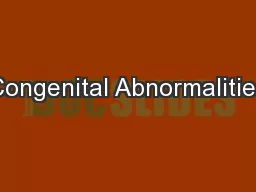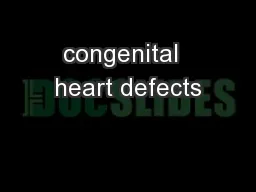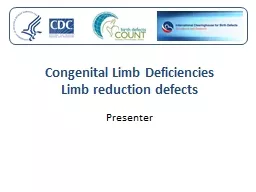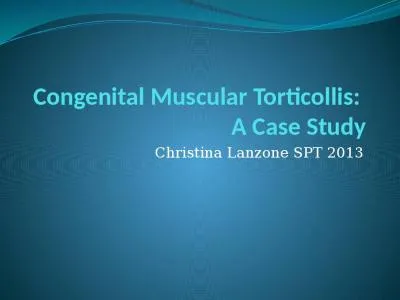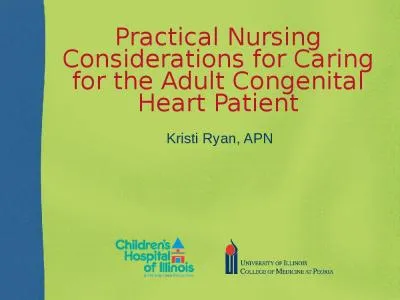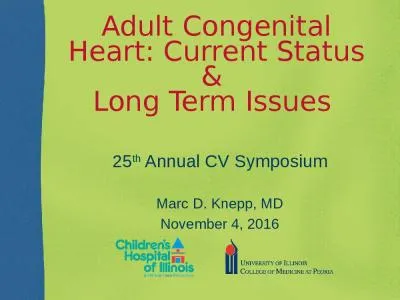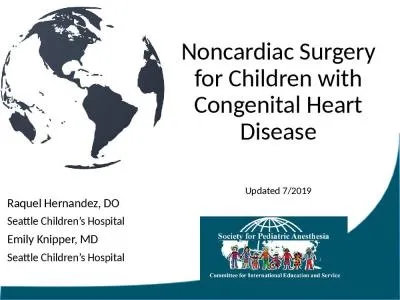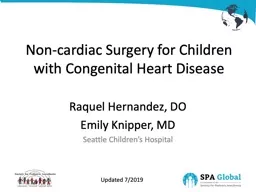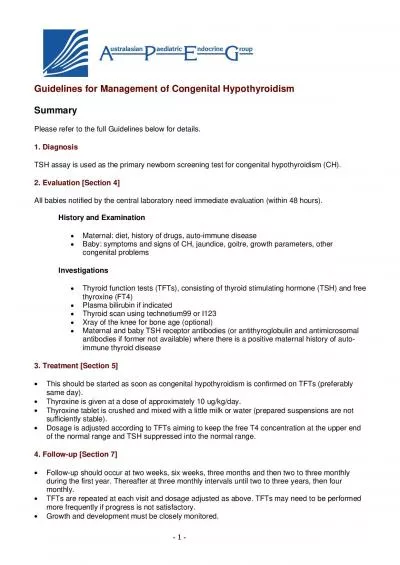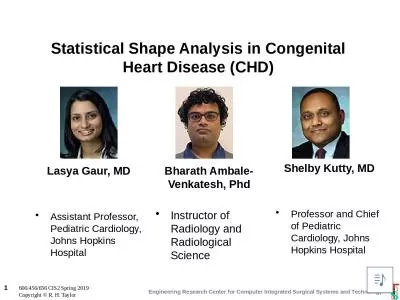PPT-Congenital Heart Diseases
Author : pongre | Published Date : 2020-06-16
Charles University of Prague 2 nd Faculty of Medicine Filip Koubek CHD Epidemiology 600700100 000 live new born in CR 6 7 1000 3040 of all CHD Ventricular
Presentation Embed Code
Download Presentation
Download Presentation The PPT/PDF document "Congenital Heart Diseases" is the property of its rightful owner. Permission is granted to download and print the materials on this website for personal, non-commercial use only, and to display it on your personal computer provided you do not modify the materials and that you retain all copyright notices contained in the materials. By downloading content from our website, you accept the terms of this agreement.
Congenital Heart Diseases: Transcript
Download Rules Of Document
"Congenital Heart Diseases"The content belongs to its owner. You may download and print it for personal use, without modification, and keep all copyright notices. By downloading, you agree to these terms.
Related Documents

